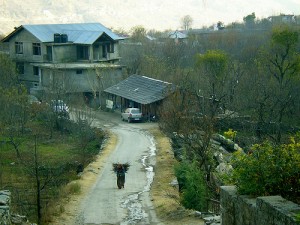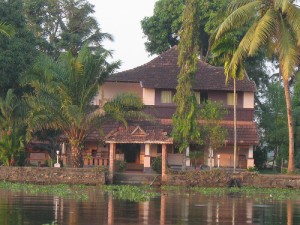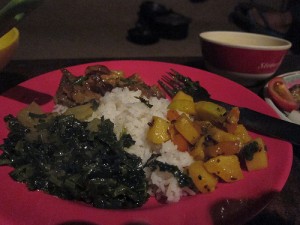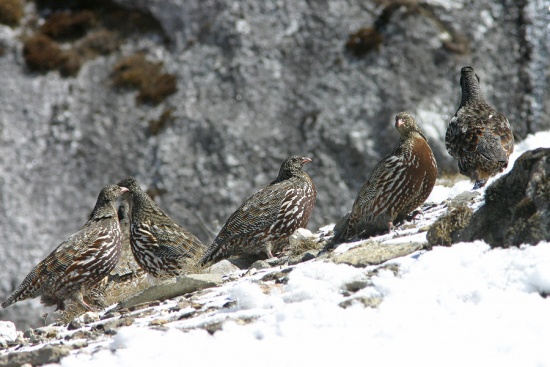 Treading on the dirt path is part and parcel of trekking but sometimes even the most seasoned trekkers long for a little comfort when they’ve been on the go for a while. A soft bed and a hot drink when high up in the mountains sounds very tempting and many ardent trekkers have found the perfect solution in home-stays and tea house treks. The concept of staying with the locals rather than in tents and hotels has caught on big time with the adventurous youth today.
Treading on the dirt path is part and parcel of trekking but sometimes even the most seasoned trekkers long for a little comfort when they’ve been on the go for a while. A soft bed and a hot drink when high up in the mountains sounds very tempting and many ardent trekkers have found the perfect solution in home-stays and tea house treks. The concept of staying with the locals rather than in tents and hotels has caught on big time with the adventurous youth today.
Mridula Dwivedi, the writer of a travel blog ‘Travel Tales from India’ relishes the local lunch of homemade chainsoo, a delicious Rajma based Garhwali dal and aloo techwani in her cosy cottage room, almost 11,000 feet above sea level while she rests and reminisces about her 50 km strenuous trek to the Valley of Flowers and Hemkunt Sahib. Dwivedi is a most enthusiastic trekker and has been to the Everest Base Camp. She admits that although she loves to spend the nights in the tents under the starry sky, there are times when it feels good to crash into a hospitable dhaba or a home stay at the end of the trek and not have a care in the world. So besides the tough high altitude expeditions, Mridula also does some not so arduous tea house style and homestay treks, which do not involve carrying bulky tents, blankets or ration supplies and which include a porter or a pony man to carry the luggage.
Tea house trek
A tea house trek is named after the tea shops that provide shelter to the travellers. It is now a current trend amongst trekkers especially among those covering the Annapurna region in Nepal to stay at tea houses. Many of the trek routes in North India around Spiti Uttarakhand, Sikkim and Ladakh are strewn with local dhabas and home stays. These places provide the weary trekkers with a hot meal, a comfortable bed and a clean restroom.
What is an advantage is that the trekkers get a firsthand look into the lifestyle and the culture of the locals.
Tea houses and home stays do not require much planning. Trekkers can just ask any of the locals for a place to stay when they are ready to stop for the night while trekking and they can check into any of the rural homes or tea houses on the way.
Avilash Bisht is a guide associated with White Magic Adventure Travel conducts one of India’s oldest tea house— Singalila National Park near Darjeeling. Bisht reveals that the age old route between the India and Nepal border is full of comfortable vintage houses that make for a cosy stay. Trekkers and travellers who prefer to have their stay planned in advance can contact any of the tour agencies as well for an organized tea trail or home stay itinerary in the Himalayas.
Home – stays for Acclimatizing
Acclimatization to a place is very important while trekking to higher altitudes. As you go higher and higher, the oxygen levels in the atmosphere decrease and your body take time to get used to this change. On one such trek to Spiti, Dwivedi opted for the home stays way of trekking. She customized her itinerary and stayed in traditional Spitian Homes while she traversed through the beautiful breezy treeless landscapes.
Dwivedi had booked the trek with Ecosphere, an NGO in Spiti in advance. She found the rooms very clean and she was offered the local brew Chang, Ladakhi bread and Maggi at every stop on the way. Besides enjoying yummy food and organic drink made from seabuckthorn, a regular Spitian home stay trek also gives the trekkers an opportunity to learn to cook homemade noodles, thukpa, tentuk, momos, cheese and butter tea.
Ecosphere also organizes a cultural trail that includes the tour of some of the ancient Buddhist monasteries and the temples in the world. However the Yak safari included in the tour instead of the usual mountain biking is the prime highlight of this tour.

According to Tracy Hunter who posted the above photo of a homestay in Kerala, “A lovely homestay on one of the canals. The only way to get here is by boat. They have their own water taxi to pick you up in Allapaluza.”
Hospitable Hosts
As many trekkers have found out the hospitality and help accorded by the locals participating in the home stays is incredible.
Gaurav Schimar, an adventure enthusiast from Delhi says he has had several happy memories of home stay treks but one in particular is close to his heart, especially since it was a life saver.
He recalls the episode, when he was trekking in winter in Ladakh and would have died of hypoxia had it not been for the timely help and care provided by the hosts where he had put up for the night.
Priya Sinha, an IT professional relates another wonderful experience, that she had at home stays. The children at the home stay were thrilled to have visitors and had her dress up in a traditional Ladakhi dress. Needles to say, Priya had a very memorable and enjoyable time during the home stay.

According to fabulousfabs the Homecooked Meal pictured above at Sonam’s Homestay in Khecheopalri Lake, Sikkim was a real tast treat.
Home Stays – A boon to responsible Eco-tourism
One of the very visible and positive effects of opting for Home stays and tea houses is the development of rural economy. With more and more people preferring home stays to hotels, the locals have gained another source of income.
This is especially commendable, since it is optimum utilization of existing resources. It is preferable to use home stays rather than having new hotels and resorts crop up and destroy places of natural beauty and valuable ecology in order to accommodate the huge influx of tourists in the area.
Being a stranger to a locality and still becoming part of the local life, is the new and the better way to eco-travel. It is affordable, eco-friendly and sure to make the journey a much more enriching experience.
Image via Flickr/cc by Indiauntravelled, Tracy Hunter and fabulousfabs.










Nice article Shilpi.. spot on.. I think home stay concept is going to change the way people holiday.. Its unique.. with rustic/village architectures.. more closer to nature and the village and local culture.. the hospitality is uncomparable since the rural owners take keen interest..
Thanks Atul. Yes…Homestays are the best way to really get to know a place and it’s people firsthand.
I have fallen in love with eco-tourism and would surely opt for homestay the next time (wonder when??) I will go on a trip to one of these places off the beaten track. However, local food in the North-east and Ladakh might mean meat. Do they have veg options too?
Zephyr, homestays are a wonderful experience in themselves as it helps becoming friends with locals and seeing a destination from their viewpoint. Vegetarian food is as much popular in Ladakh and North-east as Non-veg though as you mentioned correctly they do prefer meat dishes. But home owners resepct guest’s choices. you can opt for thukpa which is a soupy noodle dish, veg momos or locally produced and prepared vegetables like pumpkins, beetroots, and beans cooked in a variety of different ways. The staple food of Ladakhi people are Sku and Thukpa (made of wheat flour), Pava (made of sattu) and khambir (local bread). If you are travelling to the North-eastern states do no miss the delicious bamboo shoot dishes they prepare. For experimentation and knowing the feel of the cuisine before travelling do go to Delhi Haat stalls of individual states and try the veg. dishes. Hope this helps.